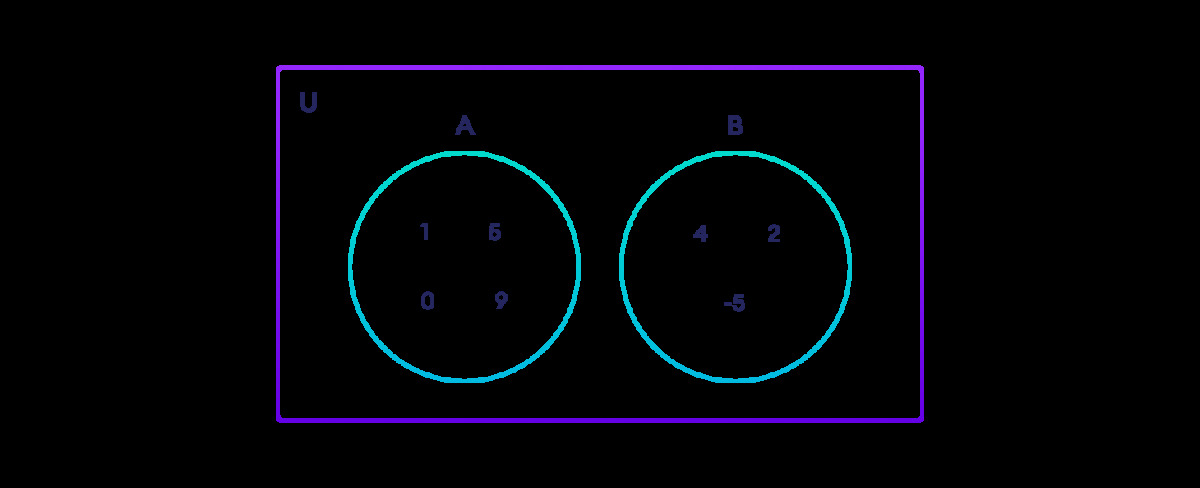如果兩個集合是不相交的集合,isdisjoint() 方法返回 True。如果不是,則返回 False。
如果兩個集合沒有共同元素,則稱它們為不相交集合。例如:
A = {1, 5, 9, 0}
B = {2, 4, -5}
這裏,集合A 和B 是不相交的集合。

用法:
set_a.isdisjoint(set_b)
參數:
isdisjoint() 方法采用單個參數(一組)。
您還可以將可迭代(列表、元組、字典和字符串)傳遞給 disjoint() 。 isdisjoint() 方法會自動將可迭代對象轉換為集合,並檢查集合是否不相交。
返回:
isdisjoint() 方法返回
True如果兩個集合是不相交的集合(如果set_a和set_b在上述語法中是不相交的集合)False如果兩個集合不是不相交的集合
示例 1:isdisjoint() 如何工作?
A = {1, 2, 3, 4}
B = {5, 6, 7}
C = {4, 5, 6}
print('Are A and B disjoint?', A.isdisjoint(B))
print('Are A and C disjoint?', A.isdisjoint(C))
輸出
Are A and B disjoint? True Are A and C disjoint? False
示例 2:isdisjoint() 以其他 Iterables 作為參數
A = {'a', 'b', 'c', 'd'}
B = ['b', 'e', 'f']
C = '5de4'
D ={1 : 'a', 2 : 'b'}
E ={'a' : 1, 'b' : 2}
print('Are A and B disjoint?', A.isdisjoint(B))
print('Are A and C disjoint?', A.isdisjoint(C))
print('Are A and D disjoint?', A.isdisjoint(D))
print('Are A and E disjoint?', A.isdisjoint(E))
輸出
Are A and B disjoint? False Are A and C disjoint? False Are A and D disjoint? True Are A and E disjoint? False
相關用法
- Python Set issuperset()用法及代碼示例
- Python Set issubset()用法及代碼示例
- Python Set intersection_update()用法及代碼示例
- Python Set intersection()用法及代碼示例
- Python Set difference_update()用法及代碼示例
- Python Set union()用法及代碼示例
- Python Set pop()用法及代碼示例
- Python Set add()用法及代碼示例
- Python Set clear()用法及代碼示例
- Python Set symmetric_difference()用法及代碼示例
- Python Set symmetric_difference_update()用法及代碼示例
- Python Set discard()用法及代碼示例
- Python Set copy()用法及代碼示例
- Python Set difference()用法及代碼示例
- Python Set remove()用法及代碼示例
- Python Set update()用法及代碼示例
- Python Set轉String用法及代碼示例
- Python Pandas Series.cumsum()用法及代碼示例
- Python Pandas Series.astype()用法及代碼示例
- Python Pandas Series.nonzero()用法及代碼示例
注:本文由純淨天空篩選整理自 Python Set isdisjoint()。非經特殊聲明,原始代碼版權歸原作者所有,本譯文未經允許或授權,請勿轉載或複製。
